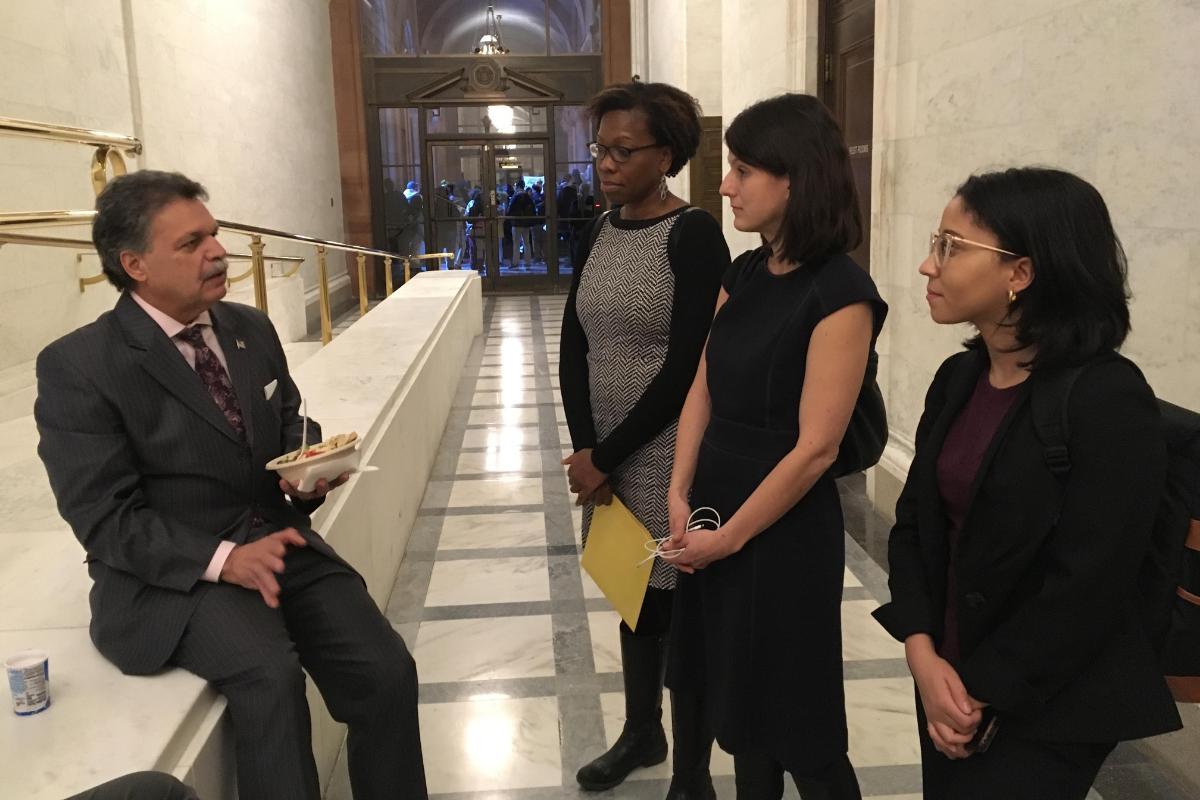The Tisch Food Center and the DOHMH Bureau of Harlem Neighborhood Health recently co-hosted a webinar led by Equity Advocates on Best Practices for Building Relationships with Policymakers. This training included an overview of why meeting with elected officials is an effective advocacy strategy along with practical tips on how to establish and leverage relationships with policy makers. Here’s the top five lessons we learned from this webinar:
Meeting with Policymakers Works!
Research shows that one-on-one meetings with policy makers are one of the most impactful and necessary pieces of any advocacy strategy, but many people are intimidated by meeting with elected officials. According to the Congressional Management Foundation, 94% of congressional staff believe that “in-person visits from constituents” would have some or a lot of influence on an undecided member of congress. Policymakers depend on trusted residents and advocates in their district to help them better understand how a pending decision, bill, or issue will impact their constituents. Your goal is to develop a relationship and become that trusted resource!
Know Who to Target
Not all policymakers are the same, each has his or her own levers of power and influence depending on their position, which committees or Caucasus they sit on and other factors. Targets of your advocacy are the key individuals or group who are in a position or who have the power to bring about the change you are advocating for. It is crucial to identify the right target(s) for your policy or campaign goal. When deciding on the right individual or group consider: What is your goal? Who has the power (both legally and politically) to make it happen?
Be Prepared, Do Your Homework
Please, please plan ahead. One of the biggest mistakes we see is advocates winging it. The easiest way to look prepared is to prepare - hold a prep call with the people attending the meeting (from your own organization or ally groups) to align on key messaging and have a basic plan for who is going to say what when. You’ll also want to know who you are talking to and what they care about so you can frame your issue effectively. What bills have they sponsored and voted on in the past that are related to your issue? What committees are they on? What are they posting about on social media? This is all public information - check out the target’s website, social media and do a quick Google search.
Make the Ask
Once you’ve explained your issue, you have to actually make an ask. Don’t leave them guessing on how they can help you or your issue. The ask can be small or big but it should be in service to achieving your policy goal. Depending on the target and what power they hold, your ask could be for the policymaker to: introduce or vote on a bill, push for a budget item, write a Dear Colleague Letter, put in a request for a hearing, write a letter of support for a grant proposal, make a site visit to your program. Most importantly, the ask should be something that the specific target has the power to act on. When making the ask, be clear, don’t dance around it. And wait for them (and keep waiting) to give you an answer.
Stay in Touch, Develop a Long-Term Relationship
You already know to write a timely thank you note. But what happens after that is often the hardest part - maintaining and deepening the relationship. To stay top of mind consider acknowledging them on good press or awards received, thank them for a positive vote or action on your issue, share updates on your program or relevant news articles and data and invite them to your organization’s events or for a site visit (photos and media are a bonus!). Identify regular touchpoints, even calendar them in. This takes effort but research shows that when you have a long-standing relationship with policymakers (and staff - they are the true gatekeepers!), they are more likely to listen to you, see you as a resource, and ultimately support your issues.
